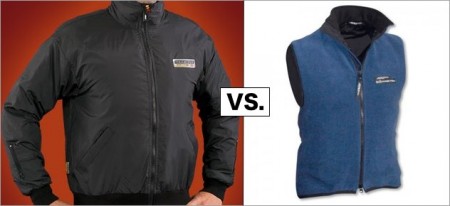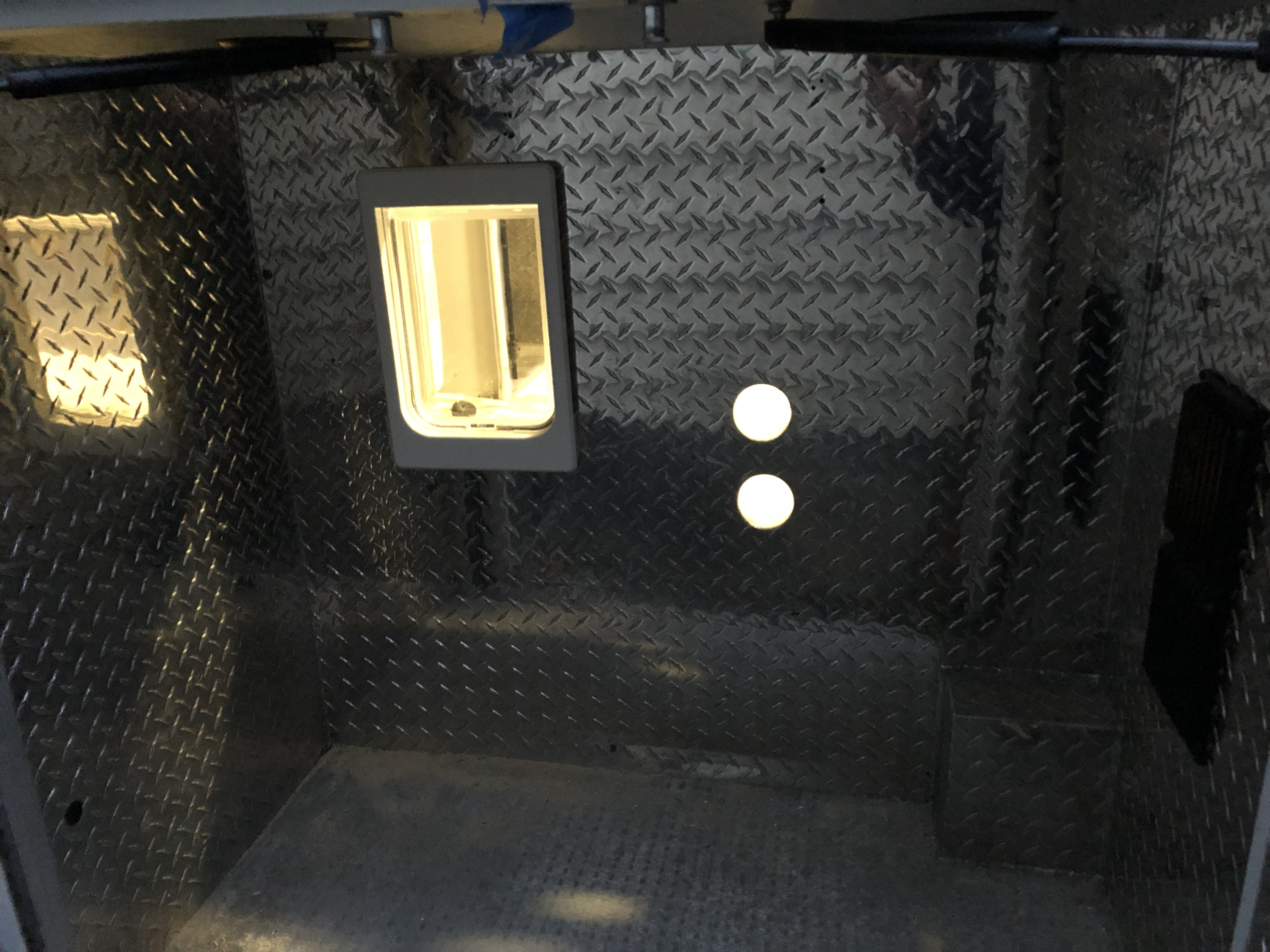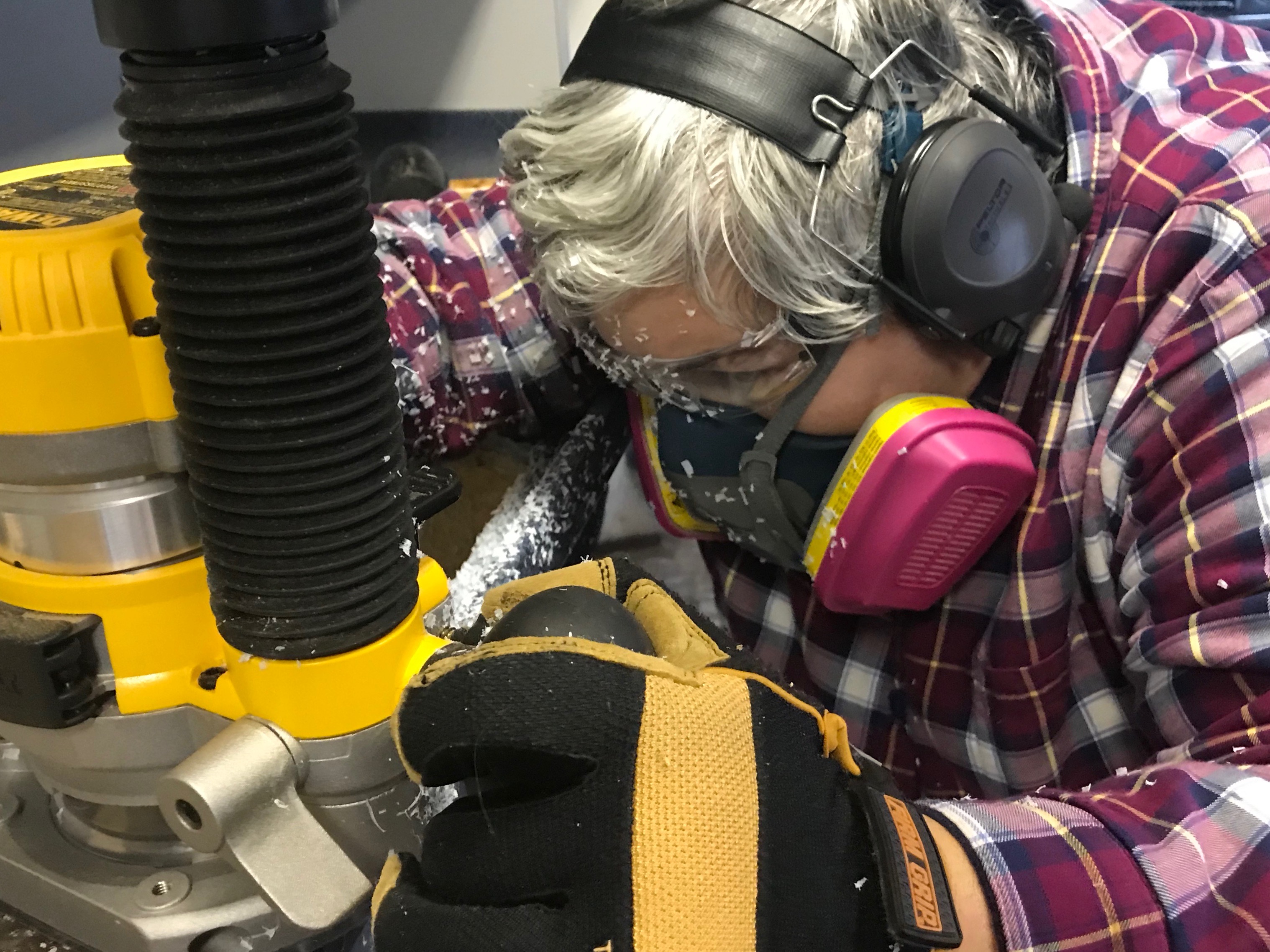Summary
The Home Office requires regular reports to determine which employee gear is performing well and should be included in the official company uniform, and what gear is under-performing. Both employees have recently acquired heated gear: Dachary got the Gerbing’s Heated Jacket Liner, and Kay got the Aerostich Kanetsu TLTec Wind Blocker Electric Vest (and sleeves). After a recent test ride involving 180 miles on the interstate in ~40 degree temps, it has been determined that official company policy shall include the Gerbing’s Heated Jacket Liner.
Purchasing Decisions
Kay
Kay wanted the Aerostich heated vest with sleeves because it was thought the vest could serve as a multi-functional garment. The vest is fleecy, and Kay believed the vest could be substituted for the traditional fleece for off-the-bike wear in addition to being an electric garment on the bike. This would save packing space on the bike and be all-around useful. Plus, reviews from existing users appeared to be quite positive.
Dachary
Dachary initially agreed with Kay’s assessment - until she discovered that the Aerostich sleeves weren’t heated. This was a deal-breaker for Dachary, as her arms had gotten quite cold on a prior test ride in ~40 temps. Much positive feedback about Gerbing’s gear, and the fact that the sleeves were also heated, convinced Dachary to go for Gerbing’s. Dachary tried on a Gerbing’s liner at Twisted Throttle when purchasing the SW-Motech TraX Panniers, and decided to buy it on the spot.
Uniform Comparisons
Off the Bike
Upon receiving the Aerostich Kanetsu vest, the employees commenced to inspect both garments closely for initial quality and impressions. The Kanetsu vest seemed functional enough, but the wires were much thicker than in the Gerbing’s liner (as the Gerbing’s has now progressed to micro-wire technology). Wires could hardly be felt in the Gerbing’s while the Kanetsu’s wires were quite thick and felt like those you’d find in electric blankets manufactured in the 1970’s.
The bigger problem upon initial inspection was that the Aerostich vest had NO pockets. It simply didn’t occur to us that anyone would design a fleece jacket with nowhere to put your cold hands. It’s also cut shorter in the front, and longer in the back, as it is a motorcycle-specific garment, but when off the bike it can leave the lower edge of the stomach somewhat exposed. Its lack of pockets and cut made it a less than ideal choice for off-the-bike wear. The belief that the Aerostich fleecy vest might be warmer than the Gerbing’s liner off the bike was also shown to be false on a subsequent walk in ~30 temps - both liners are roughly equivalent in off-the-bike warmth, but the Gerbing’s liner covers the body more fully, and is more comfortable.
It was later determined that the Kanetsu vest does technically have a single pocket, but it’s where the connector is located and as the most difficult connection to undo is the one in the jacket it is where you are most likely to store the cable and isn’t helpful for putting hands in when walking around in the cold.
The Gerbing’s liner won the initial round for off-the-bike functionality.
On the Bike
The initial test ride in ~40 degree temps revealed that the Gerbing’s liner heated up almost instantly, and got quite toasty even on the lowest setting. The variable temperature controller is quite powerful and produces a range of temperature tolerances. Employees believe that the Gerbing’s jacket will keep employees comfortable down to quite cold temperatures and in a range of conditions.
The Aerostich Kanetsu vest failed to perform well in the initial test, and it was believed that the employee had perhaps gotten a broken thermostat controller. It was later revealed that the thermostat was plugged in backwards and, as suspected, there had been no electric heat on the initial test, but it did provide warmth due to the fact that it was an additional layer of fleece.
It is our opinion that any heated gear that can be plugged in backwards without noticing is an example of failed design. The Gerbing’s gear only connects in one way, and the connections are dummy-proof. While the Kanetsu does offer non-SAE connectors you must choose the SAE if you want a thermostat. Also, the Kanetsu’s SAE connections are quite stiff and difficult to connect and remove, and the SAE connector on the jacket itself is held in place with zip ties and shifts every time you connect or disconnect the cables.
On the 90-mile ride home, the Aerostich Kanetsu vest was plugged in properly and performed quite well, but while the heat was significant on the back it was not particularly noticeable on the chest. The lack of heated arms was not considered a problem. In this run we had no problem with on-the-bike functionality, although the cord to the controller was short enough that Kay kept in the pocket where it wasn’t adjustable. It was later realized that the multiple cords can be connected in different configurations which allows for the thermostat to be placed farther from the jacket, where it can be adjusted. Regardless of how they are configured there is simply too much cable overall, and riders must figure out how best to handle the excessive cabling dangling from their batteries. Additionally, it is not initially obvious which cabling configuration is best and we feel that this is, again, an example of a failed design.
The Gerbing’s heated liner was proven to be extremely valuable on the 90-mile ride home, as Dachary found herself submerged in muddy water during the day and was still wet riding home. Riding home in ~40 degree temps on the interstate in wet gear would likely have resulted in hypothermia, but the Gerbing’s jacket protected said employee and kept her warm and comfortable.
One thing we did like about the Kanetsu was its easy to manipulate on / off button with a bright red light.
Conclusions
In the end, both jackets performed comparably on the bike. However, employees have determined that the Gerbing’s is designed with better features, including:
- Pockets for putting hands in off the bike;
- Better cut for off-the-bike;
- Dummy-proof, easy connections;
- Heated sleeves.
The Gerbing’s liner is also less expensive, costing a total of $299.90 for the jacket and portable dual-temp controller, compared to $307 for the Aerostich Kanetsu vest, sleeves and single-device thermostat. Gerbing’s with a dual-temp controller gives employees an opportunity to add heated devices in future; with a single-temp controller, Gerbing’s is an even better value at $269.90, compared to the Kanetsu with the same functionality at $307.
The official company policy on Company Uniforms has been expanded to recommend Gerbing’s heated jacket liners for all employees in the future. As the Kanetsu has already been purchased and used we shall continue to use it for the foreseeable future and update this document with any additional information.
Notes: When the Kanetu’s thermostat is plugged in backwards its LED lights up yellow, instead of blinking red (very subtle), and the light on the power switch will not turn off. So, it is possible to determine that the Kanetsu has been plugged in incorrectly, but it is not obvious.






